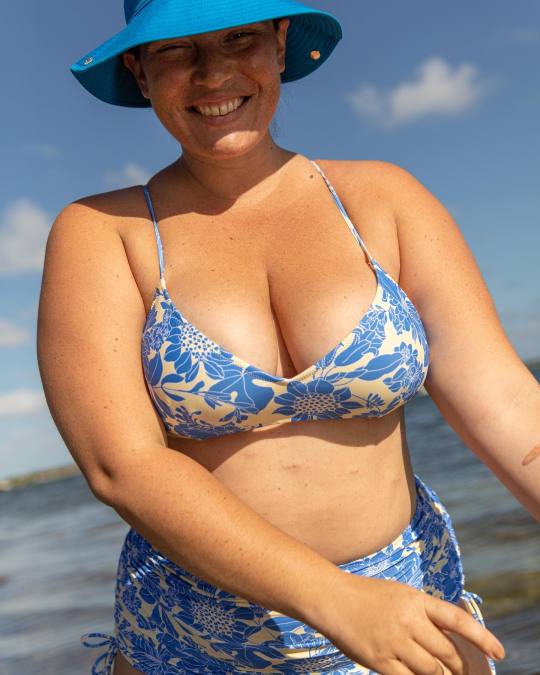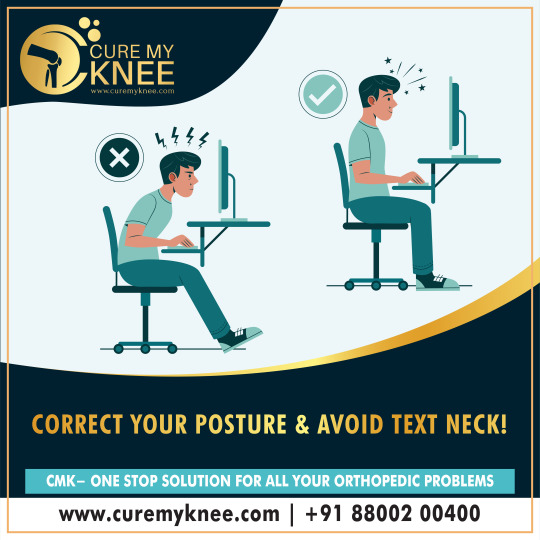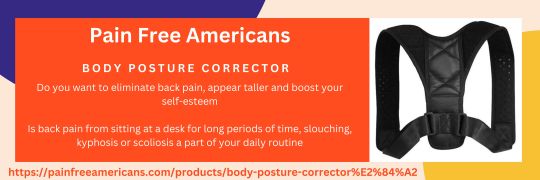#Body Posture
Text

Sedimental Memories 08, Jean-Michel Bihorel
248 notes
·
View notes
Photo



instagram.com/bonjourclem
#bonjourclem#clementine desseaux#curve model#curvy model#body posture#body positive#body positivity#body acceptance#bopobabe#curvy#thick#beach#summer#miami#florida
433 notes
·
View notes
Photo

The way she sits and poses in a seductive manner in those black heels, stockings, and dress is sure to make any man go crazy for her. That could be you if you practice enough. It’s part of transitioning, dear.
#feminization captions#transgender#feminine#coming out#trans#affirmations#sexy#black dress#mtf hrt#transition#seduce me#girl#body posture#becoming her
798 notes
·
View notes
Text



Source: giggle-throughlife
#my edit#self photography#photo of the day#visual body art#conceptualphotography#aesthetic#visual aesthetics#i love it#white shirt#take it easy#cosy mood#pink panty#monday#july 2023#neckless#diamond#stay in bed#body posture#body lines#long time no post#vanilla gold#tumblrpost#artists on tumblr#hello tumblr
135 notes
·
View notes
Text
Shoot mode ON!
💃🏻@jomoljoseph
📸 @ezrazakeriah
#hotphotoshoot #photoshot #malluhot #webseries #shortfilm #hotmodel #boudoir #boudoirphotographer #boudoirinspiration #boudoirmodel #nudeshoot #nudephotos #jomoljoseph #jomol_joseph #ezrazakeriah #ezrotica #keralamodels #modelshoot



#adult model#body poetry#body politics#body posture#body positive#bodypositivism#curvy model#bodypositivity#fashion model#fashion
342 notes
·
View notes
Text

Lo intente en hacerle de esa forma, es natural! Es como no tener pena en apreciar lo que eres! Con celulitis, cicatrices, marcas de nacimiento todo lo que te hace sentir que es son imperfecciones son los que te hace tu, Tu!
Nadie te va derecho de destruyendo lo que eres! Protégete del los malos tratos con los que no ven como tú quieres que te vean, Si no te amas a ti mismo ¿!cómo diablos vas a amar a alguien?!
#tokachithewarrier2#tokachi#salacia#irena#irena the mermaid#love#tokachi the warrier#soul crash#body posture#body anatomy#renaissance#latín Renaissance#outdoor nudity#drawing nudity
5 notes
·
View notes
Text
A Novel Lightweight Wearable Device to Perform Balance Exercises at Home - Technology Org
New Post has been published on https://thedigitalinsider.com/a-novel-lightweight-wearable-device-to-perform-balance-exercises-at-home-technology-org/
A Novel Lightweight Wearable Device to Perform Balance Exercises at Home - Technology Org
Maintaining balance and posture is quite a complex skill, even though it comes naturally to most people. However, postural control tends to worsen with age due to various reasons, such as muscle weakness coupled with changes in vision and sensory input. This explains why older people are much more prone to falling and suffering fall-related injuries than younger individuals. Approximately 40% of older individuals have been reported to fall at least once a year.
Image title: Balance training using a wearable device to improve reactive postural control
Image caption: (Left) Pneumatic artificial muscles in the wearable device generate small disturbances. By holding a posture against these disturbances, a user can improve their reactive postural control. (Right) Plots showing how the displacement of the center of pressure of the user’s soles in the mediolateral direction (D-COPML) significantly decreased in the group that trained with the device (WBED) compared to the ‘sham’ group. An unexpected perturbation was generated at 0 seconds.
Image credit: Masataka Yamamoto from TUS Japan
License type: Original content
In this regard, over the past few decades, scientists have found that postural control can be improved through various exercises, which in turn helps prevent falls. Training and cultivating the ability to perform compensatory postural adjustments (CPAs) to counteract the effects of unexpected external perturbations is possible. Although scientists have come up with specialized devices to perform balance exercises involving unexpected perturbations, these machines are generally bulky, expensive, and complex to use, rendering them suitable for clinical settings only.
But could there be a more practical way to perform these exercises comfortably at home? In a recent study published in IEEE Journal of Translational Engineering in Health and Medicine on 31 August 2023, a research team led by Assistant Professor Masataka Yamamoto from Tokyo University of Science (TUS), Japan, and including Professor Hiroshi Takemura, Mr. Daiki Yoshikawa, and Mr. Taku Washida from TUS, as well as Professor Koji Shimatani from the Prefectural University of Hiroshima, explore this question. For their research, the researchers developed an innovative wearable balance exercise device (WBED) and investigated its effects on CPAs and reactive postural control.
The proposed wearable device uses two pneumatic artificial muscles (PAMs) to generate unexpected perturbations. These PAMs, which resemble a pair of hollow shoulder straps or suspenders, can be forced to extend or contract by regulating the air pressure inside them. For this purpose, the WBED includes a set of electronically controlled valves connected to a can of compressed gas. This enables a computer program or smartphone application to control the valves and quickly fill or empty either PAM with gas, producing a force that pulls the user sideways in a specific direction.
To test whether WBED can truly improve reactive postural control, the researchers recruited 18 healthy adult males and divided them randomly into two groups: WBED and sham. All participants first underwent an evaluation of reactive balance. They had to hold a tandem stance for one minute while air cylinders on both sides of the hips pushed them laterally at unpredictable moments. The participants in the WBED group then performed a few rounds of balance training using the proposed device, while the sham group underwent the same exercises without unexpected perturbation. Lastly, a second evaluation was performed to check for improvements in postural control.
The researchers measured several variables as outcomes during the evaluations, including peak displacement, time at peak displacement, peak velocity, and root mean square of the soles’ center of pressure. Notably, participants in the WBED group exhibited lower displacement and peak velocity after exercising with the device. “Our results prove that perturbation-based balance exercises using WBED immediately improve the subjects’ reactive postural control,” remarks Dr. Yamamoto, satisfied with their findings. “Wearable exercise devices, such as the proposed WBED, could contribute to the prevention of falls and fall-related injuries.”
In the near future, the proposed device could revolutionize how people with a high tendency to fall perform balance training, especially in countries with a steadily aging population like Japan. “We designed WBED to be lightweight, portable, and easy to use both at home and in clinical settings. It weighs only 0.9 kg and takes less than three minutes to put on,” highlights Dr. Yamamoto. By training regularly with WBED, older individuals and people undergoing physical therapy can efficiently improve postural control and responsiveness, preventing falls and improving their overall health. Notably, WBED could also be useful for athletes who want to improve their balance.
Source: Tokyo University of Science
You can offer your link to a page which is relevant to the topic of this post.
#2023#aging#air#artificial#body posture#computer#devices#direction#easy#effects#engineering#Exercise#Future#gas#Health#Health & medicine news#how#injuries#it#Japan#LED#LESS#Link#Medical devices#Medicine#muscle#muscles#One#population#portable
0 notes
Photo

Do you suffer from headaches, neck discomfort, or back pain? The problem could be bad balance! Here are some pointers to correct your balance and avoid these pains:
1. Avoid slouching and keep your shoulders relaxed while sitting up upright with your back against the chair and your feet flat on the floor.
2. Take breaks: If you spend a lot of time sitting down, get up, stretch, and walk around every 30 minutes.
3. Strengthen your core: Supporting your vertebrae and enhancing posture can be accomplished by strengthening the muscles in your back and abdomen.
4. Adjust your workstation to prevent squinting or straining. Make sure your chair, desk, and computer display are at the right height and distance.
5. Stretch frequently: Include regular stretching in your routine with an emphasis on the muscles in your neck, shoulders, and back.
Keep in mind that having excellent posture not only makes you feel better, but it also conveys confidence and can help you avoid future injuries. Consult a physiotherapist if you're suffering from persistent discomfort for specialized guidance and care
0 notes
Text
Orthopedic Doctor In Delhi

If your neck is inclined in a forward direction and your head comes in front of your shoulders instead of resting directly above them, then you are likely to have Text Neck.
To prevent Text Neck, you can work on your posture while using your handheld devices. It is important to sit properly and position your phone or other screens at eye level, so you are not bending over it.
You can also switch sitting positions, take brief walks around your office or home, and stretch your muscles often to help relieve muscle tension.
👉 𝗧𝗼 𝗸𝗻𝗼𝘄 𝗺𝗼𝗿𝗲 𝗶𝗻 𝗱𝗲𝘁𝗮𝗶𝗹𝘀
📞Talk to an expert: 8800200400
0 notes
Text
BODY POSTURE CORRECTOR

Do you want to eliminate back pain, appear taller and boost your self-esteem
Is back pain from sitting at a desk for long periods of time, slouching, kyphosis or scoliosis a part of your daily routine
0 notes
Text
Tips to remain healthy for Online Students
#online class takers#online classes#health tips#healthy eyes#eye care#healthy learning#body posture#text neck#wellness#student life
0 notes
Text
I love how people with chronic pain can be at extreme levels of pain and just be like “My body is ouchie”
#it’s me my body is ouchie#chronic pain#chronic illness#disabled#fibromyalgia#me/cfs#gastroparesis#disability#migraine#postural orthostatic tachycardia syndrome#chronic fatigue#chronic fatigue syndrome#post exertional malaise#pwme#pots#spoonie
7K notes
·
View notes
Text
Back Pain is a result of bad posture. Fix the alignment of your shoulders and Pelvis area and get relief from lower back pain. 📍Watch the Full video on Youtube: https://youtu.be/2np4f3OWiLE
0 notes
Text
💃🏻@joseph_jomol
📸@ezrazakeriah
#reels #reelsinstagram #reelsvideo #reelsviral #reelshot #sexyreels #reelslovers #mallureels #mammootty #bigb #mallutrending #malluhot #jomol_joseph #joseph_jomol #jomoljoseph #ezrotica #ezrazakeriah #reeloftheday #follow #hotcontent #boudoir #boudoirphotography
#adult model#body poetry#body politics#body posture#bodypositivism#body positive#bodypositivity#fashion#fashion model#curvy model
44 notes
·
View notes
Text
Intelligent Flexible Pain Relief Neck Massager - The products are the assuagement of all sorts of quandaries on cervical vertebrae, neurasthenia, and recollection loss. The flexible neck massager makes your body feel more relaxed every time wherever you are. The neck-shoulder massager can promote your blood circulation, making you can keep more salubrious.
#neck massager#neck pain#reflexcart#tumblr blog#healthcare#back pain#cervical#vertebrae#recollection loss#body posture#tumblelog
1 note
·
View note
Text

x
#the whole reason im gifing this is bc once in a fic the writer said max's posture was 'bad in a way that it speaks the body language of#an apex predator's and is hostile and attractive at the same time' and i have not stopped thinking about that sentence#max verstappen#f1#*#**
285 notes
·
View notes